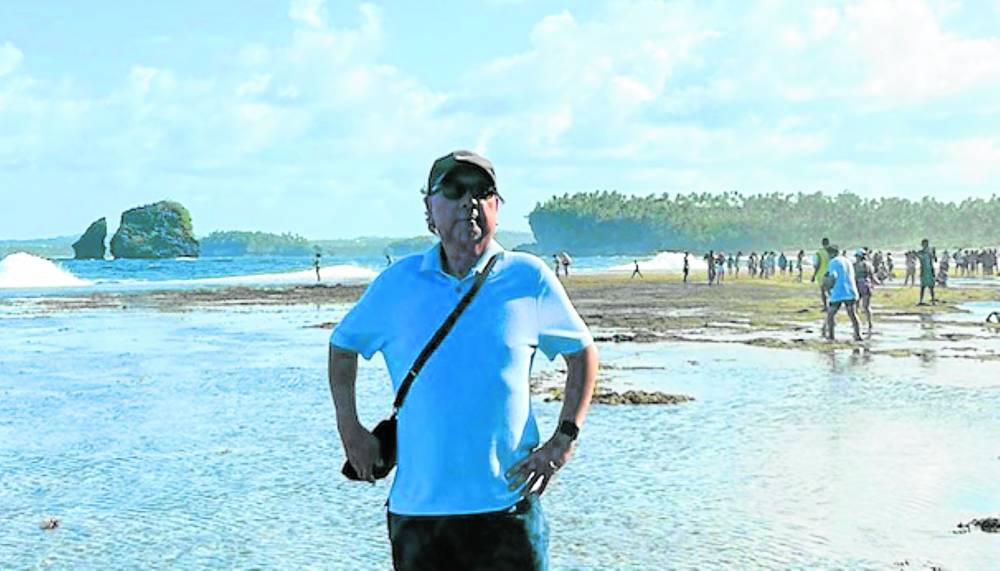
A travel brochure states: “Siargao is an island located off the northeastern coast of Mindanao. It is shaped like a teardrop and is composed of 48 smaller islands and islets. Siargao is known today as a surfing mecca, a place where thrill seekers the world over gather to ride the waves.
For the local population, however, Siargao is their simple, unassuming hometown, with vast swaths of coconut farms, thick mangroves and secluded coves. The island was a relatively sheltered surfing destination until around the 2010s, when word of the island’s majestic waves exploded in the surfing world.”
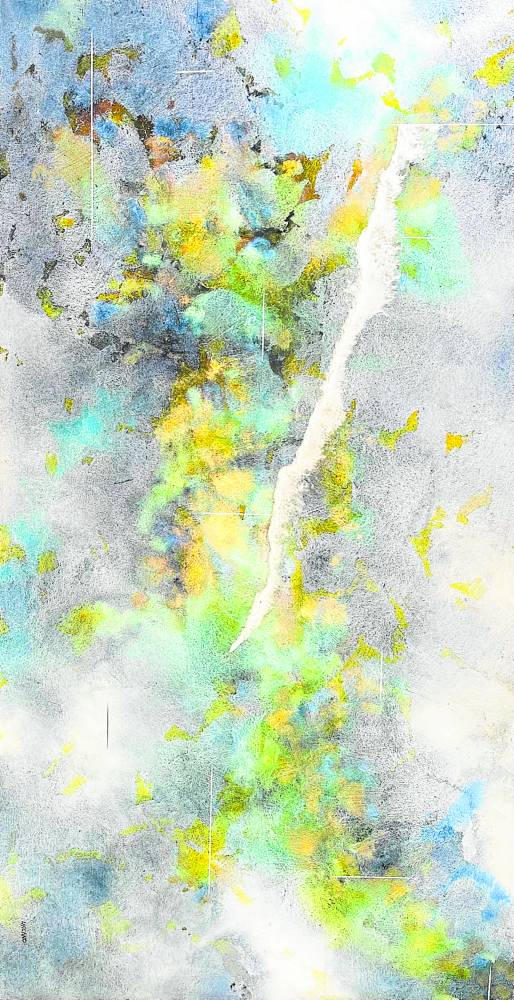
Artist Rico Lascano and his wife Chachu visited Siargao last summer, content not to surf, surely, but to see the sight of the majestically swelling waves. As the moth is to the flame, the Lascanos are to water—drawn to the siren sound of this element. The articulation of this element is explicit in the art of Lascano and in the haiku poetry of Chachu, which, it cannot be eluded, is implicit in its influence on her husband’s art.
Haiku is the traditional Japanese verse form that consists of 17 syllables arranged in a line sequence of five-seven-five syllables. Regarded as the greatest of the Japanese haiku poets is Matsuo Basho, whose iconic poem served as the salutary impetus for his exhibition: “An old silent pond/ a frog jumps into the pond/ Splash! Silence again.”
Watery reflections
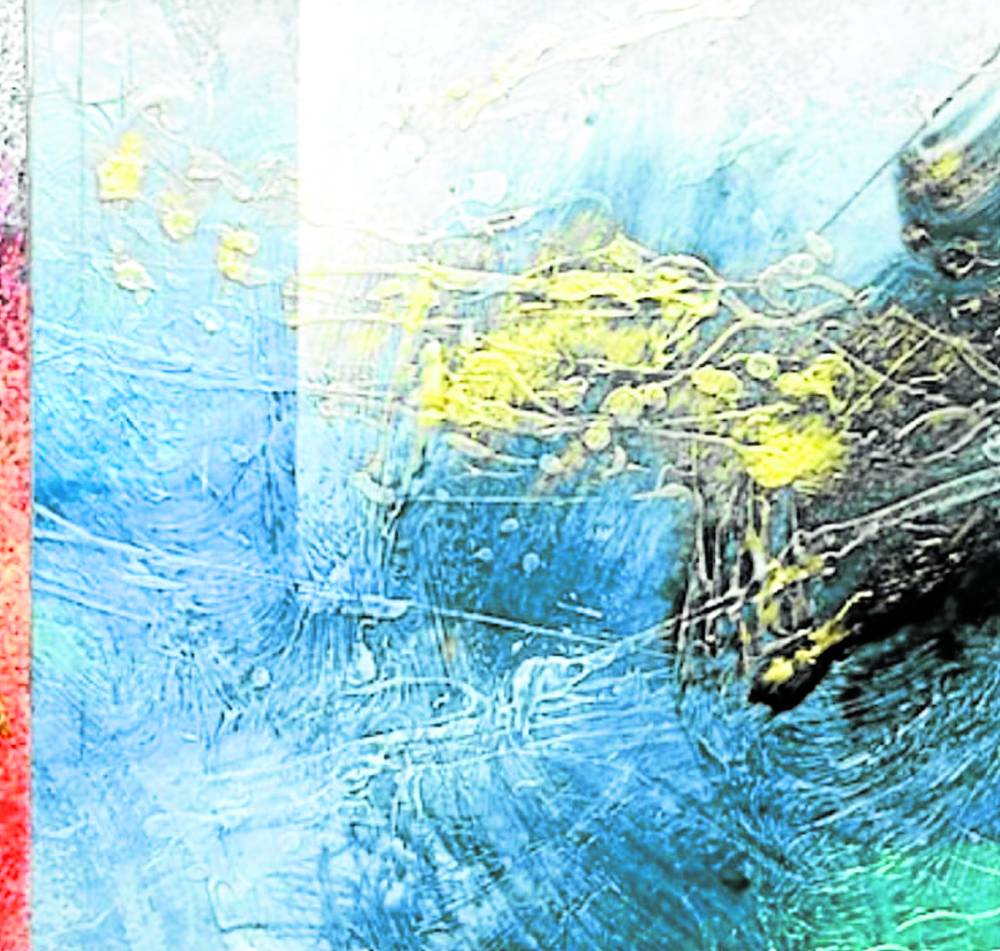
Like its watery reflection on the surface of Chachu Lascano’s paper, her own lines emerge: “On a tranquil pond,/ a shimmering nymph swims past/ Seducing my thoughts.”
The direct effect of these lines on the subsequent “Pondering” series engendered the visual emanations of Lascano, deliberately emphasized in his chosen method of painting wet-on-wet. A painting technique that involves the layering of one wet paint upon another on a surface that has also been moistened with water is called alla prima, literally “first attempt,” which results in an ethereal or misty atmosphere. The painting is a huge exhalation of space and light that isn’t limited by any lines. There aren’t any clear breaks between the color passages, and the tones don’t clash with each other. Both the subject and the medium—water—have, in a sense, conceived the painting that emerges.
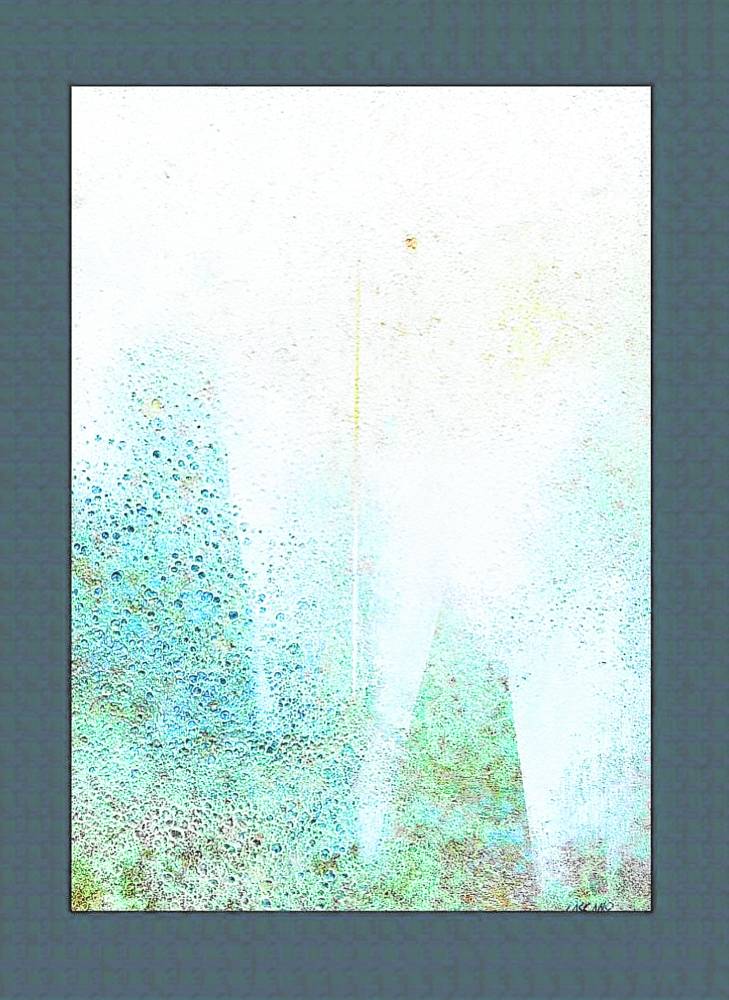
A succeeding show is another series titled “Stream of Consciousness,” which alludes to a steady current of water, as in a river flowing into the ocean. Again, Lascano did not create a visible world but instead engaged in his own self-discovery, owning for himself an interior space reserved for his emotional responses to the subject of water.
In his exhibition “Surf, Sea, and Zen,” on view at the Leon Gallery International, Lascano succumbed to the impulse of memory. Like any tourist exploring a new destination, his camera was always at the ready. That summer trip to the surfing paradise of Siargao, famous for the vigorous rise of its waves, was recorded in a series of images, commanded by the sight of the surging, swelling water.
Gossamer brushstrokes

The recurrent image of the soaring waves in Siargao brings to mind the curling waves in the woodblock print of the Japanese printmaker Katsushika Hokusai. The most famous artwork in Japanese history, “The Great Wave off Kanagawa,” depicts three boatmen held in terror by the formidable ocean. In the background is a view of Mt. Fuji.
Lascano, on the other hand, abstracts the sight of Siargao’s waves, transforming them into a frothy, irregular strip of white traversing and cresting across the open sea of his canvas, an azure vision of light and air, thus sustaining the spare, minimalist composition that has characterized all his works. What does it matter that there are no three Siargao surfers to parallel Hokusai’s three fishermen? By not submitting to the expectation of figuration, Lascano eschews the dubious figuration appropriated from the iconic image of Hokusai.
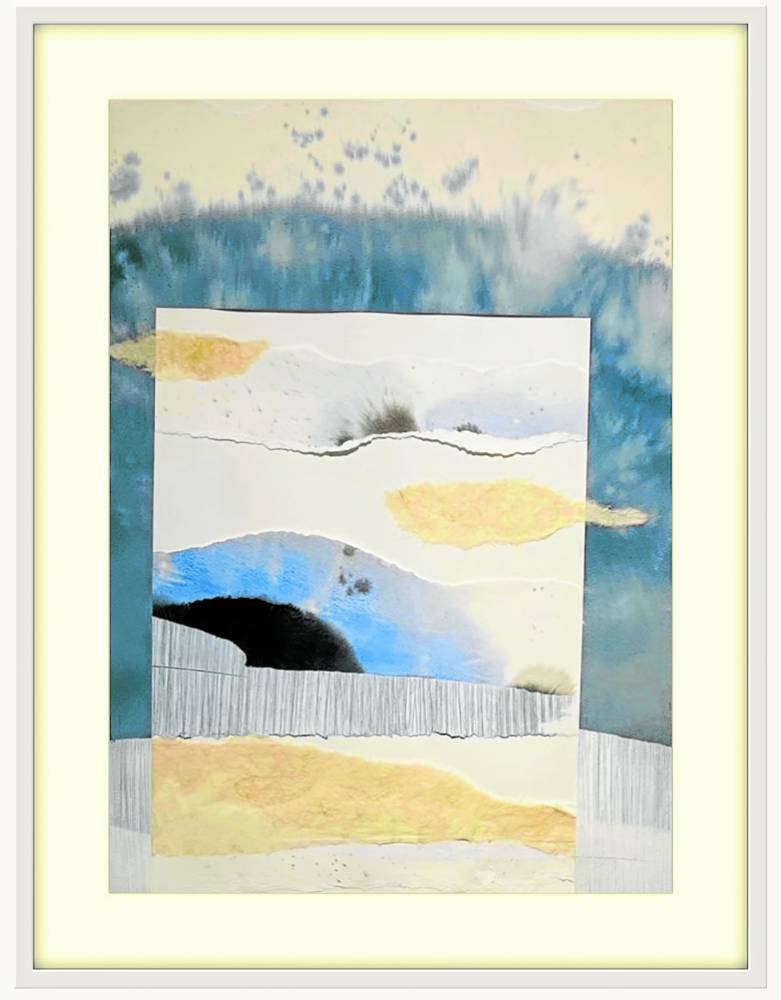
Interestingly, from Basho to Hokusai, the art of Lascano has been faithful to the sensibility of Japanese Zen aesthetics. The artist’s whispery, gossamer brushstrokes are a sea of speckled, glinting bubbles that are a perfect counterpart to the equally famous rock gardens at Ryoanji Temple in Kyoto. Its rectangular expanse of white pebbles and three strategically placed rocks is a domain of stillness and tranquility, calmness and peacefulness. In like manner, the Siargao paintings generate a sense of equanimity and repose, immersing the viewer in the nuances of a gentle surface, an emotional experience.
Serenity can also be evoked by colors. Lascano is aware that they are measured by their own visual equivalent in decibels. The degree of loudness has a commensurate effect on the viewer’s dilated retina, bewildering the spirit. For this artist, a whisper of muted colors consisting of 30 decibels is infinitely preferable to a scream charging at 120 decibels.
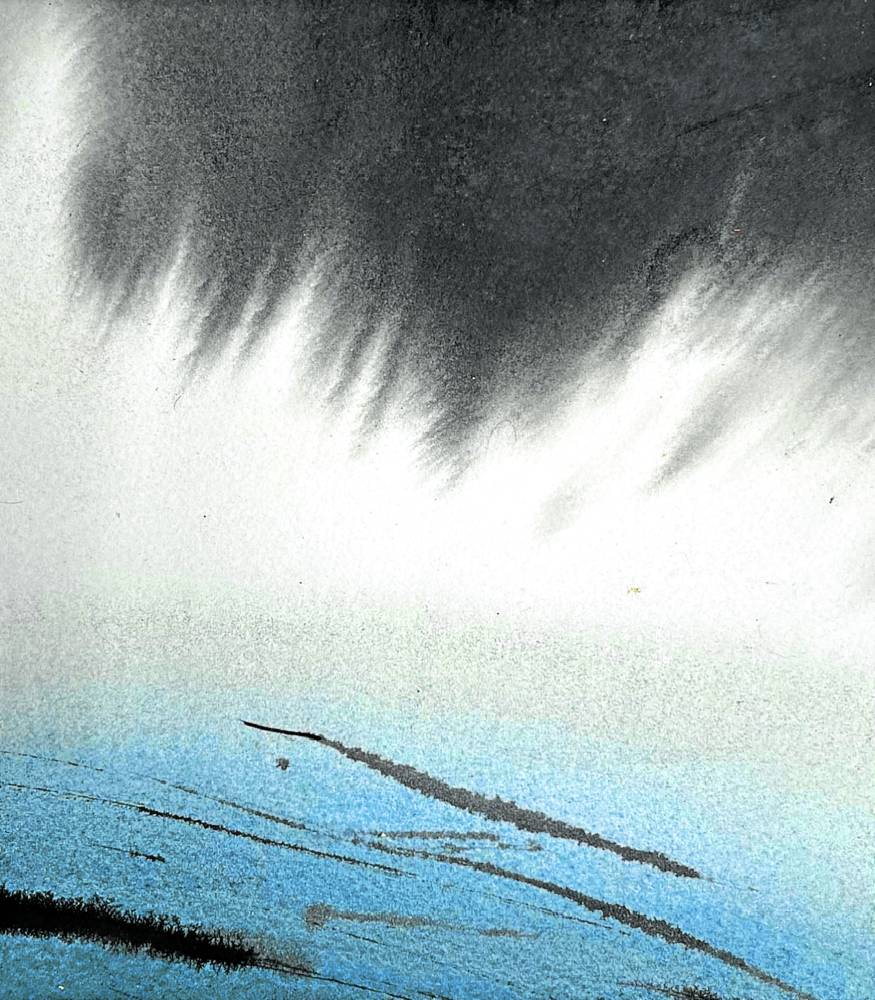
As evinced by the soft-edged works arrayed in Lascano’s “Surf, Sea and Zen,” the language of the spirit is silence. —Contributed
Show runs until Aug. 6. León Gallery International is at G/F Corinthian Plaza, 121 1229, Paseo de Roxas, Legazpi Village, Makati City.










































